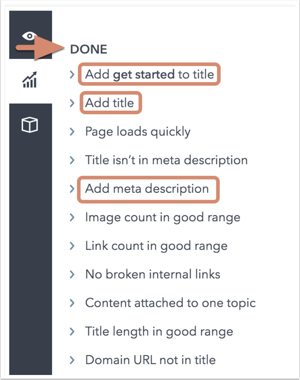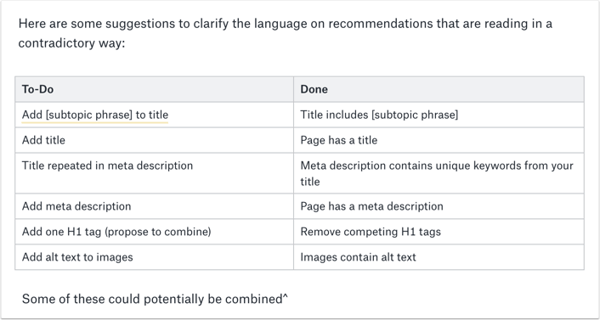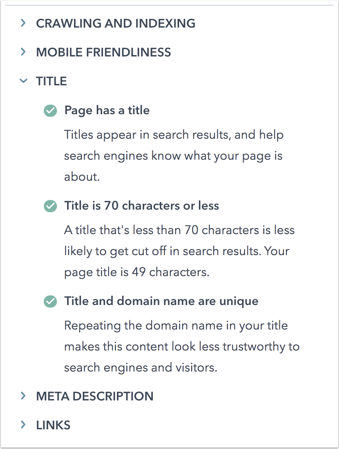Megan Driscoll
content design | service design | user research | UX strategy | information architecture | technical writing | content operations
SEO tool microcopy
Unclear language patterns and redundant recommendations were contributing to low adoption and a perception that using the SEO tool took "too much time."
By making a few changes to the UI copy and content structure:
- Reduced cognitive load
- 38% decrease in support tickets
- 75% customer satisfaction
Collaboration
I conducted a quick audit of the existing language in the experience.
- Each individual recommendation had its own nested explanation. This created more clicks, and a longer list of recommendations to review at a glance.
-
In the example below, Add get started to the title is phrased as an instruction for them to complete. It's unclear that this phrase is being used to tell the user that this item has already been completed (DONE).

- There were also multiple separate to-do items for the same page feature, including:
- 3 separate recommendations related to the meta description.
- 4 recommendations about the page title
- Some recommendations about the same page attribute were dispersed throughout the list instead of all together
Solution
- I provided example copy for 2 possible solutions to help the team visualize what both options would entail.

- Then I collaborated with the UX designer to group related recommendations into collapsable sections, organized by topic.
- This reduces cognitive load and showed users and reduced how much they needed to read on the page.

Results
- The result reduced the length of the initial SEO recommendations list by 40%.
- The content changes resulted in 75% positive sentiment in user feedback with very low negative sentiment.
- Support ticket volume for analyzing SEO recommendations also fell by 38% 😊